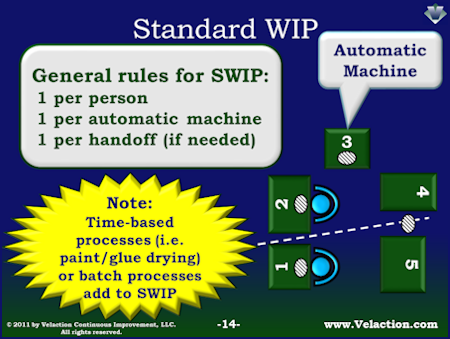Shojinka
Shojinka is a form of flexible manufacturing, where the number of workers vary to match demand requirements. This is obviously superior to a static system that staffs work areas without consideration for fluctuations in production requirements. Being able to reassign people to exactly where they are needed will help keep Read more…
